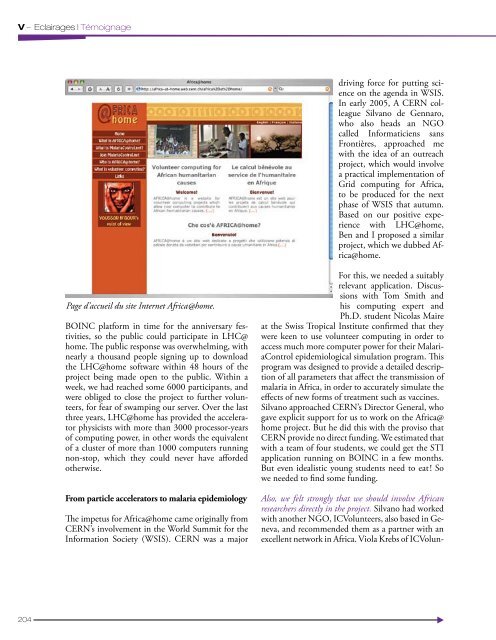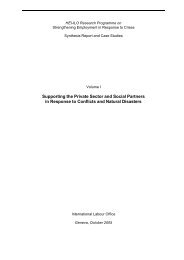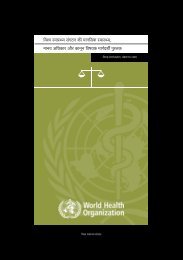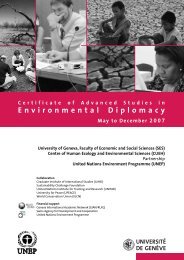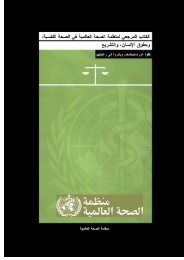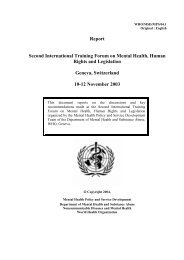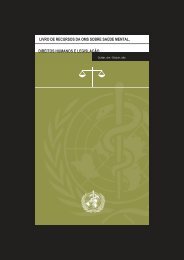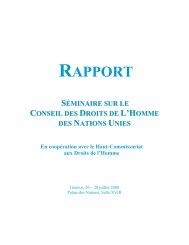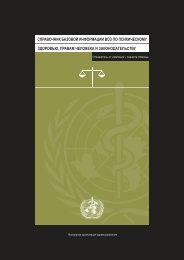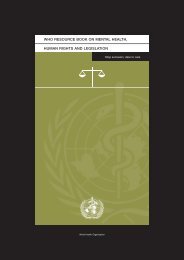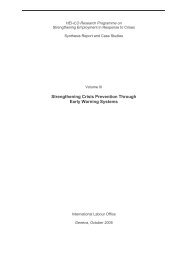Les liaisons fructueuses - RUIG-GIAN
Les liaisons fructueuses - RUIG-GIAN
Les liaisons fructueuses - RUIG-GIAN
Create successful ePaper yourself
Turn your PDF publications into a flip-book with our unique Google optimized e-Paper software.
V – Eclairages | Témoignage<br />
driving force for putting science<br />
on the agenda in WSIS.<br />
In early 2005, A CERN colleague<br />
Silvano de Gennaro,<br />
who also heads an NGO<br />
called Informaticiens sans<br />
Frontières, approached me<br />
with the idea of an outreach<br />
project, which would involve<br />
a practical implementation of<br />
Grid computing for Africa,<br />
to be produced for the next<br />
phase of WSIS that autumn.<br />
Based on our positive experience<br />
with LHC@home,<br />
Ben and I proposed a similar<br />
project, which we dubbed Africa@home.<br />
Page d’accueil du site Internet Africa@home.<br />
BOINC platform in time for the anniversary festivities,<br />
so the public could participate in LHC@<br />
home. The public response was overwhelming, with<br />
nearly a thousand people signing up to download<br />
the LHC@home software within 48 hours of the<br />
project being made open to the public. Within a<br />
week, we had reached some 6000 participants, and<br />
were obliged to close the project to further volunteers,<br />
for fear of swamping our server. Over the last<br />
three years, LHC@home has provided the accelerator<br />
physicists with more than 3000 processor-years<br />
of computing power, in other words the equivalent<br />
of a cluster of more than 1000 computers running<br />
non-stop, which they could never have afforded<br />
otherwise.<br />
From particle accelerators to malaria epidemiology<br />
The impetus for Africa@home came originally from<br />
CERN’s involvement in the World Summit for the<br />
Information Society (WSIS). CERN was a major<br />
For this, we needed a suitably<br />
relevant application. Discussions<br />
with Tom Smith and<br />
his computing expert and<br />
Ph.D. student Nicolas Maire<br />
at the Swiss Tropical Institute confirmed that they<br />
were keen to use volunteer computing in order to<br />
access much more computer power for their MalariaControl<br />
epidemiological simulation program. This<br />
program was designed to provide a detailed description<br />
of all parameters that affect the transmission of<br />
malaria in Africa, in order to accurately simulate the<br />
effects of new forms of treatment such as vaccines.<br />
Silvano approached CERN’s Director General, who<br />
gave explicit support for us to work on the Africa@<br />
home project. But he did this with the proviso that<br />
CERN provide no direct funding. We estimated that<br />
with a team of four students, we could get the STI<br />
application running on BOINC in a few months.<br />
But even idealistic young students need to eat ! So<br />
we needed to find some funding.<br />
Also, we felt strongly that we should involve African<br />
researchers directly in the project. Silvano had worked<br />
with another NGO, ICVolunteers, also based in Geneva,<br />
and recommended them as a partner with an<br />
excellent network in Africa. Viola Krebs of ICVolun-<br />
204


